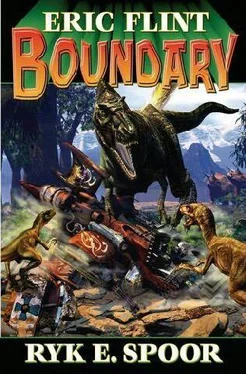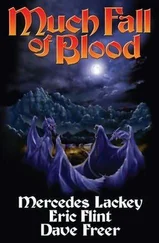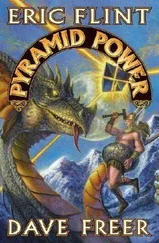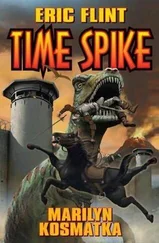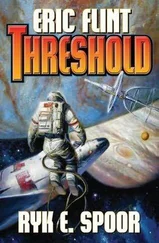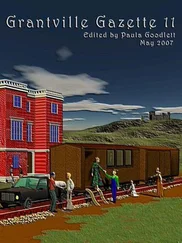Eric Flint - Boundary
Здесь есть возможность читать онлайн «Eric Flint - Boundary» весь текст электронной книги совершенно бесплатно (целиком полную версию без сокращений). В некоторых случаях можно слушать аудио, скачать через торрент в формате fb2 и присутствует краткое содержание. Жанр: Космическая фантастика, на английском языке. Описание произведения, (предисловие) а так же отзывы посетителей доступны на портале библиотеки ЛибКат.
- Название:Boundary
- Автор:
- Жанр:
- Год:неизвестен
- ISBN:нет данных
- Рейтинг книги:3 / 5. Голосов: 1
-
Избранное:Добавить в избранное
- Отзывы:
-
Ваша оценка:
- 60
- 1
- 2
- 3
- 4
- 5
Boundary: краткое содержание, описание и аннотация
Предлагаем к чтению аннотацию, описание, краткое содержание или предисловие (зависит от того, что написал сам автор книги «Boundary»). Если вы не нашли необходимую информацию о книге — напишите в комментариях, мы постараемся отыскать её.
Boundary — читать онлайн бесплатно полную книгу (весь текст) целиком
Ниже представлен текст книги, разбитый по страницам. Система сохранения места последней прочитанной страницы, позволяет с удобством читать онлайн бесплатно книгу «Boundary», без необходимости каждый раз заново искать на чём Вы остановились. Поставьте закладку, и сможете в любой момент перейти на страницу, на которой закончили чтение.
Интервал:
Закладка:
Helen indicated a tarp and field tent nearby. "We set one up for you near the site. You'll need us to show you what to do, right?"
"Certainly. I'm no paleontologist. I need to see what you need done, and you'll probably have to give me feedback on the data, so I can refine it to what you really need."
Helen caught a faint glint of color from behind the mirrored glasses as he entered the darker area of the tent. She realized that A.J. must be using a VRD or projective display on or from his glasses.
"I'll give you a holler when I'm ready."
They spent the next hour or so making sure the site was cleared of anything that might interfere with A.J. Baker's work-tools, canvas coverings, they even swept away dust. Finally Helen heard a call from the tent. She went over, with Jackie and Joe following.
"You're ready, A.J.?"
"Ready to work my magic, yes, indeed." A.J. turned. To Helen's astonishment, there appeared to be a literal halo of light hovering around the man's head. A gasp from Jackie confirmed it was not her imagination.
"Oh, for the love of-A.J., you showoff!" Joe snorted. "And there's no way it should be a halo, anyway. Why not horns?"
"How do you do that?" Jackie demanded.
A.J. patted the large pouch on his belt. "Fairy Dust. From Dust-Storm Tech. Finest intelligent dust sensor motes on the planet. These are integrated with micromotile units to let them fly, as long as I can either keep' em supplied with enough power to scavenge-or I'm willing to let them drain the hell out of the onboard batteries for the sake of a few seconds of showing off. Yeah, that's a cheap stunt using their illuminators, but it's fun."
He opened the flap. The halo, which at closer range appeared to be made up of hundreds or even thousands of individual tiny sparks of light, poured itself into the pouch.
"These things aren't toys, though. It's the heart of my approach. Thousands of ultrasensitive sensors all over the survey area, networking themselves together automatically, then using all that data to pull out a really detailed picture of whatever lies below. The trick is knowing what sensors and modalities to use and how to combine them and process the data the right way. Now, let's take a look at this dig of yours."
As they headed to the dig area, Jackie glanced at the belt pouch curiously. "I've heard of them being used for things like inventory tracking and so on, but…"
"That's just the tip of the iceberg," A.J. said. "Even back in the first decade of this century, when Dust, Incorporated, Ember, and a few others first started making intelligent sensor motes, it was clear there were a lot of potential uses for distributed sensor and computing networks that were embodied as near-microscopic motes that each had their own power, communication, computation, sensor, and memory capacity. I honestly don't think I could list every use I've thought of for these things in the past few years."
"So these motes can look right through the rock?"
A.J. laughed. "Not exactly. Let me take a look at what we have and I'll explain a little more."
Helen showed him around the dig area, letting the imaging and sensor expert kneel down to examine the fossils and surrounding rock. She saw him reach into the pouch and then let fall a ghostly shimmer of the dust-mote sensors across the area. From the side, Helen could see that the light behind his glasses was directed into his eye; what she'd seen vaguely before was the reflection. A Virtual Retinal Display, then, rather than a mini heads-up display projection. The VRD flickered brightly from his eye for a moment or two.
"Hmm, interesting." The imaging specialist seemed to have the habit of talking to himself. "Yeah, we can work with that."
He turned back to Jackie. "The motes are really excellent at sensing things, and if I combine the signals from thousands of them across the area, that's great-but only if there's something to sense. And there's no way anything their size can produce the beefy signals I'm going to need. Penetration through rock depends on a lot of different things-the type of signal, the wavelength, the precise type of rock, presence of moisture, and the power available probably being the most dominant, although there's a bunch of other ancillary ones. For the most part, I can control three of those variables-type, wavelength, and power. The trick here is that we have something of a dilemma. We want lots of penetration, but we also want lots of detail. As a rule, penetration increases with increasing wavelength-but the level of detail that can be detected decreases with increasing wavelength. If I want a shorter wavelength to give me a readable return, then I need a lot of power."
Helen nodded along with Jackie, as A.J. continued to carefully sift his Fairy Dust onto the ground in the area of the fossils and the rock still left to be removed.
"So what do you use? GPR? Seismics?"
"The short answer is yes." A.J. grinned. "Ground Penetrating Radar is just fine, for some things. But for others, some acoustic signals are good. Seismic shock is related to acoustics, of course, but I can induce different signal characteristics with acoustics than with a simple seismic signal. I can also sometimes get results with powerful magnetic fields. They react with the metals in the ground and bones, and bones are often packed with metal compared to their surroundings. I also use radiation detection-as I'm sure you know, sometimes fossils accumulate significant radioactives."
Helen nodded.
"There have been times I've used radiation directly in imaging, but that's not really practical in this setting, so I'll have to settle for whatever I get on the passives. Straight centimeter-scale radio waves on as high power as I can manage is another thing I'm going to try. While that wouldn't normally penetrate very far, a lot of your fossils here aren't all that far below the surface. I also try to use digital pulses where possible."
"Does that make them penetrate farther?" Helen asked. It didn't seem likely to her.
A.J. shook his head, smiling in acknowledgement of her doubtful tone. "Not directly, no. But what it does do is make it much, much easier for me to pick up the return signal from the noise, because I can listen for a specific pattern. I know what I'm looking for, in essence, and that really increases the chances of picking it up. Where the motes come in is in registering the returns from all different modes in thousands of closely related vectors, which the sensor net can coordinate and extract as precise survey points in spacetime. The motes construct their own ad hoc network and then derive their own relative positions with very high accuracy. Between time-of-flight, multiple triangulation, and a few other tricks like performing interference patterns, the network characterizes itself to within very small fractions of an inch. This means that the combined received signals are known to an extremely high degree of accuracy. That takes some processing time-that's what it's doing now, since I've stopped playing Tinkerbell.
"So once the network's fully characterized, I start setting off the signal pulses. I let the network know"-he tapped his glasses and the virtual control interface that only he could see-"exactly what signal I'm about to send, then trigger it. The net records all the responses it can, I hit it with another pulse; maybe change modes, it starts building up a rough picture. I examine it, see if I've got something coming up. Maybe I go back, do a few more GPR or radio shots, or try another acoustic signal, or shift frequencies. Eventually, I've got all the data I think will be useful. Then I can really go to town on this stuff; sensor fusion, bandpass filtering, synthetic aperture, Kalman and Weiner filters, all that kind of thing, plus some tricks of my own.
"With a handful of these motes and no special signal generators, I can use the ambient sound to locate and determine the number, direction, and general composition of your tents-without any of my dust motes actually touching the tents. Heck, with equipment twenty years older, I could send any two of you off to have a conversation, and not only locate you, but pick out your entire conversation, whispered, on the other side of a hill three hundred meters off. These motes have access to my own neural net code, expert systems, fuzzy logic structures, all sorts of stuff in the control unit and local heavy-duty processors, like in the main control unit here."
Читать дальшеИнтервал:
Закладка:
Похожие книги на «Boundary»
Представляем Вашему вниманию похожие книги на «Boundary» списком для выбора. Мы отобрали схожую по названию и смыслу литературу в надежде предоставить читателям больше вариантов отыскать новые, интересные, ещё непрочитанные произведения.
Обсуждение, отзывы о книге «Boundary» и просто собственные мнения читателей. Оставьте ваши комментарии, напишите, что Вы думаете о произведении, его смысле или главных героях. Укажите что конкретно понравилось, а что нет, и почему Вы так считаете.
